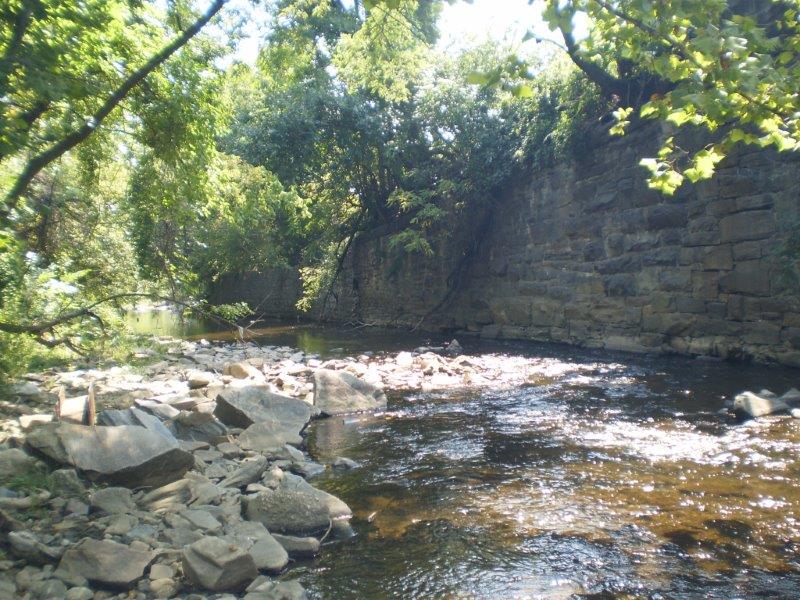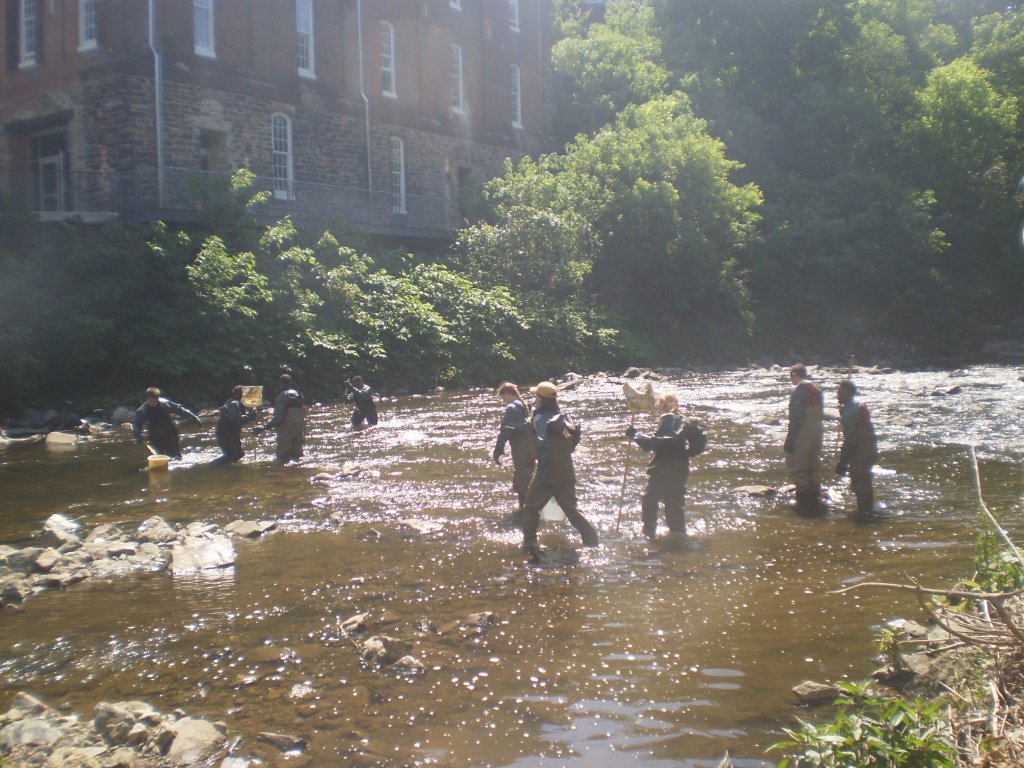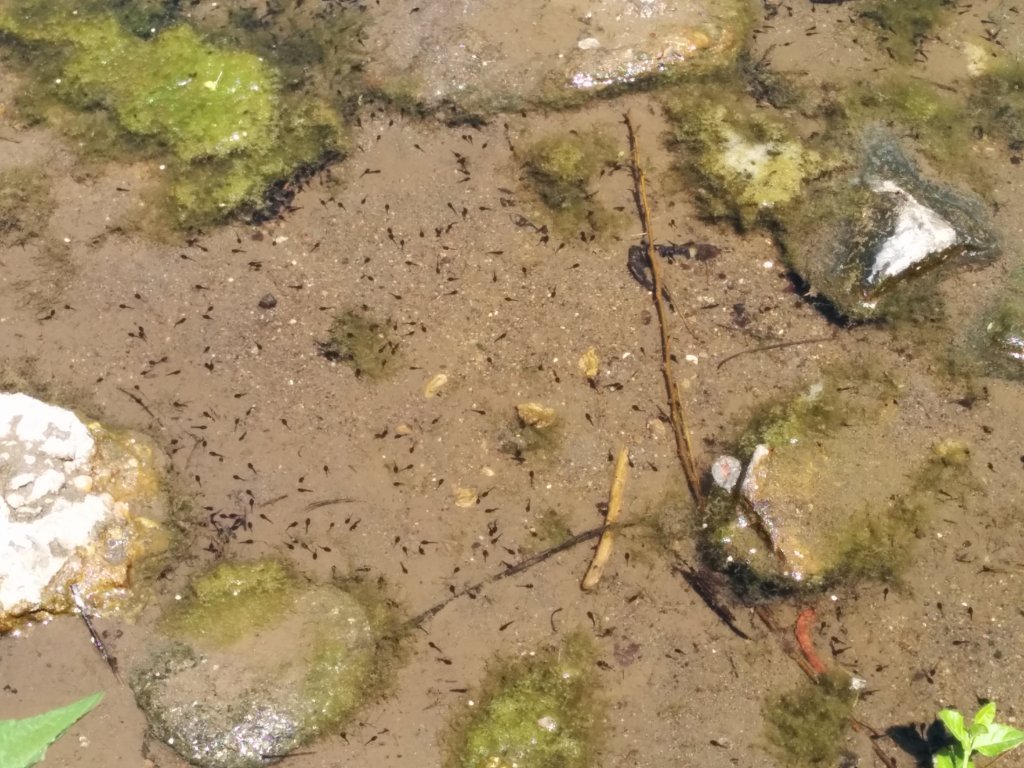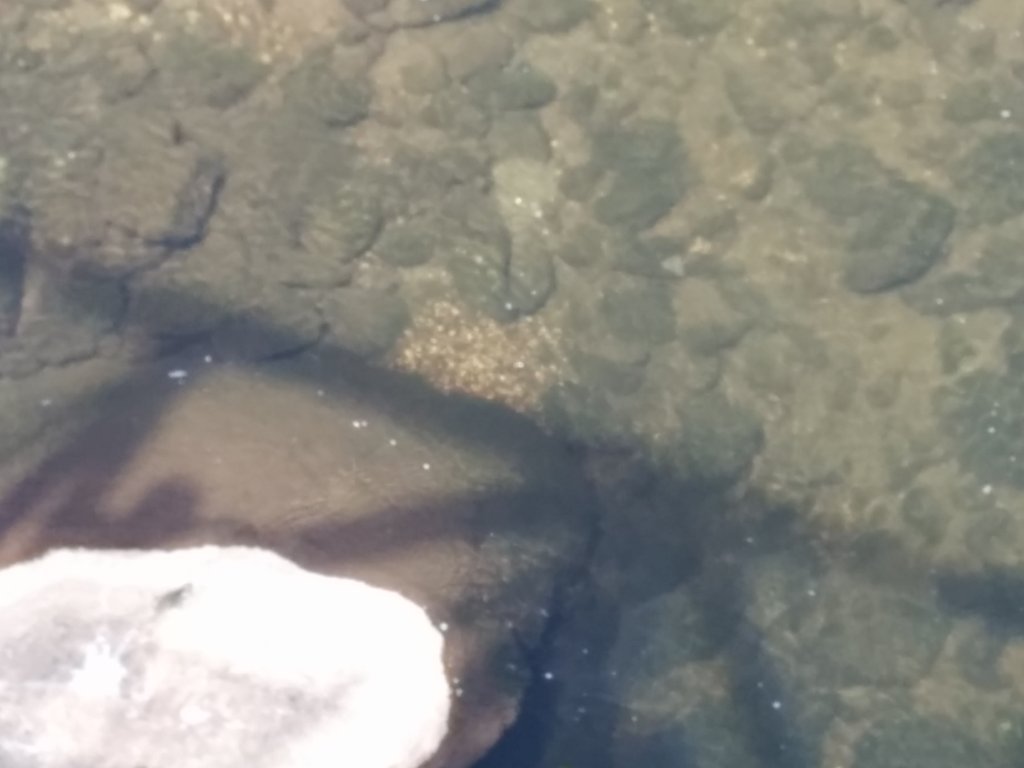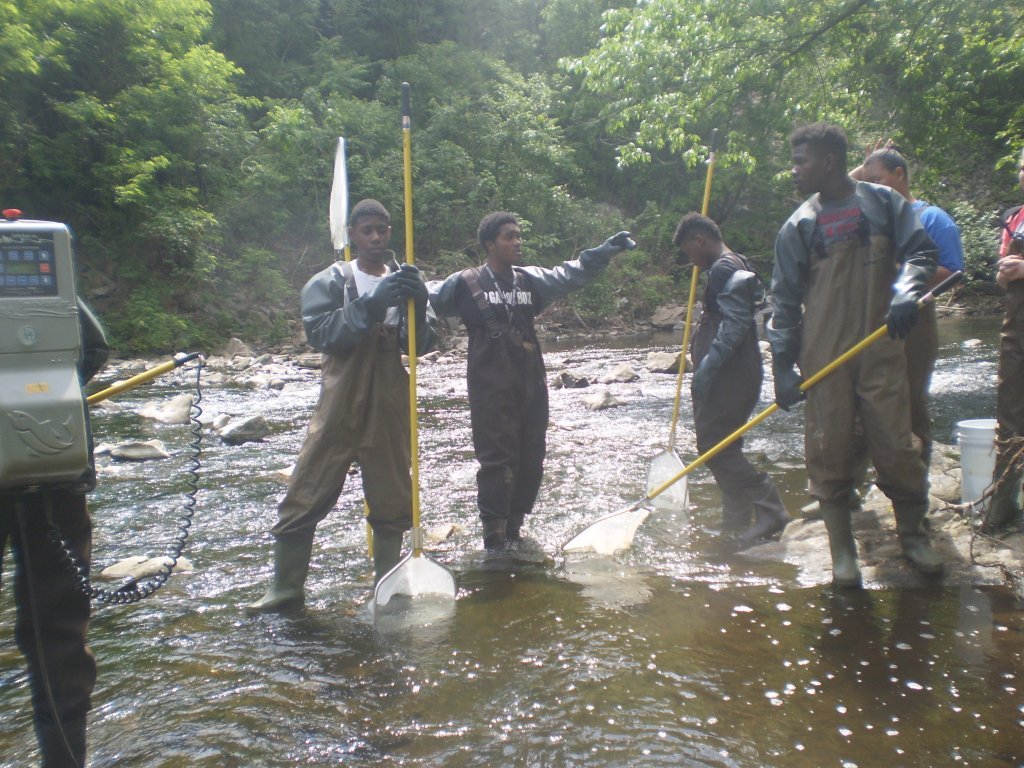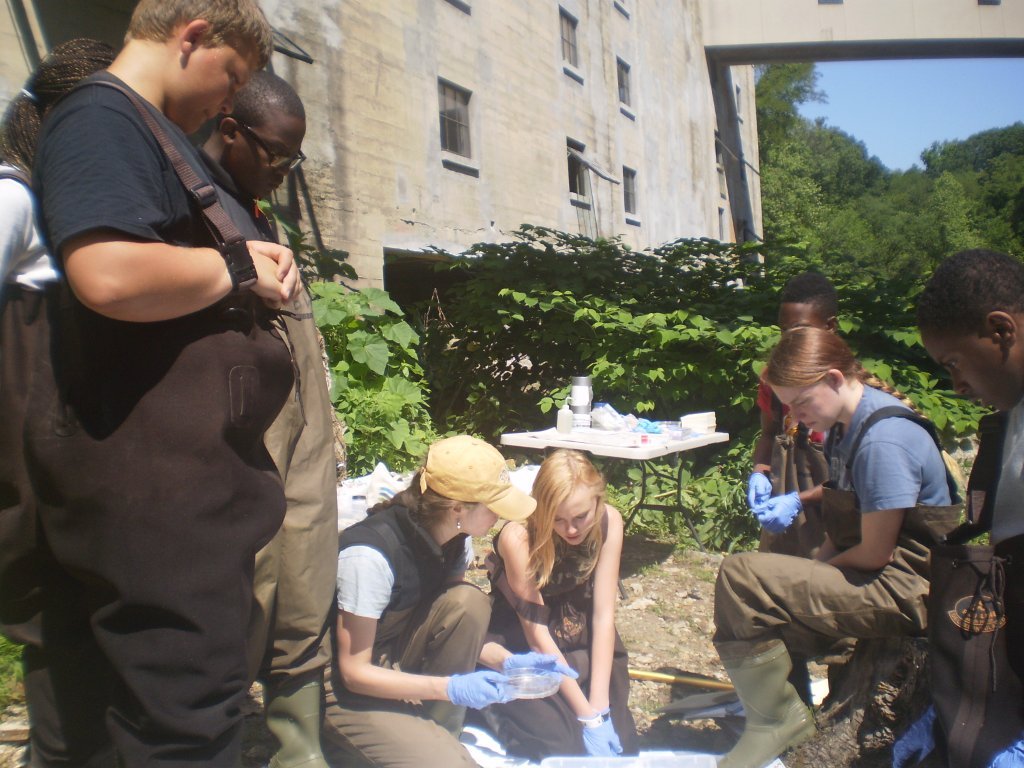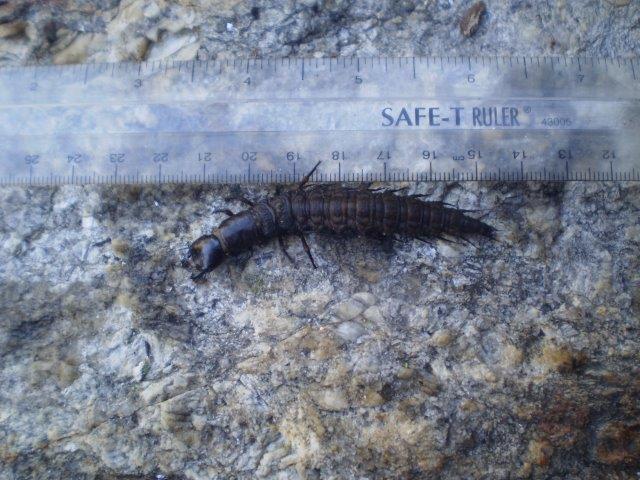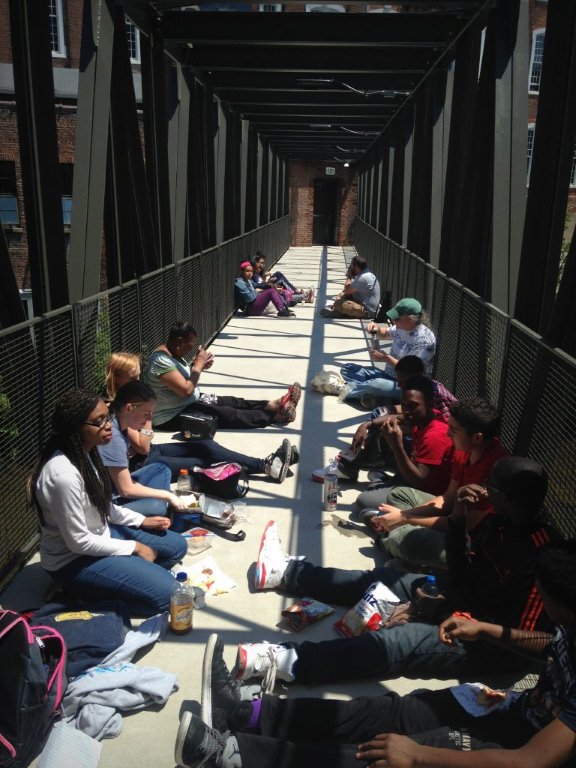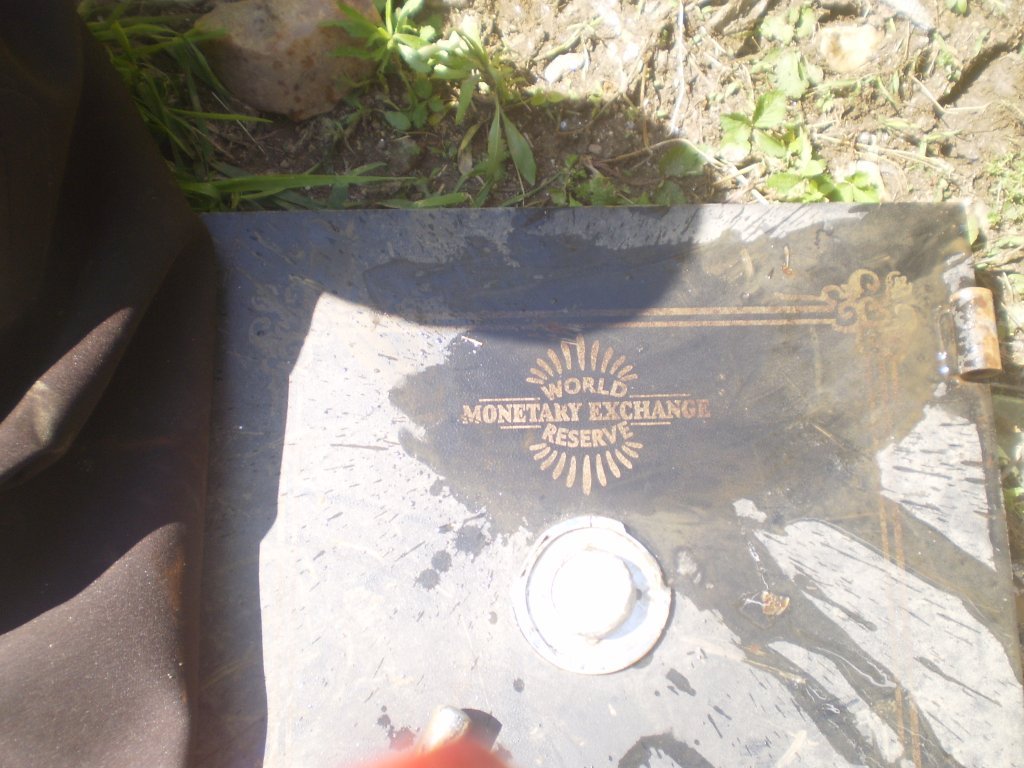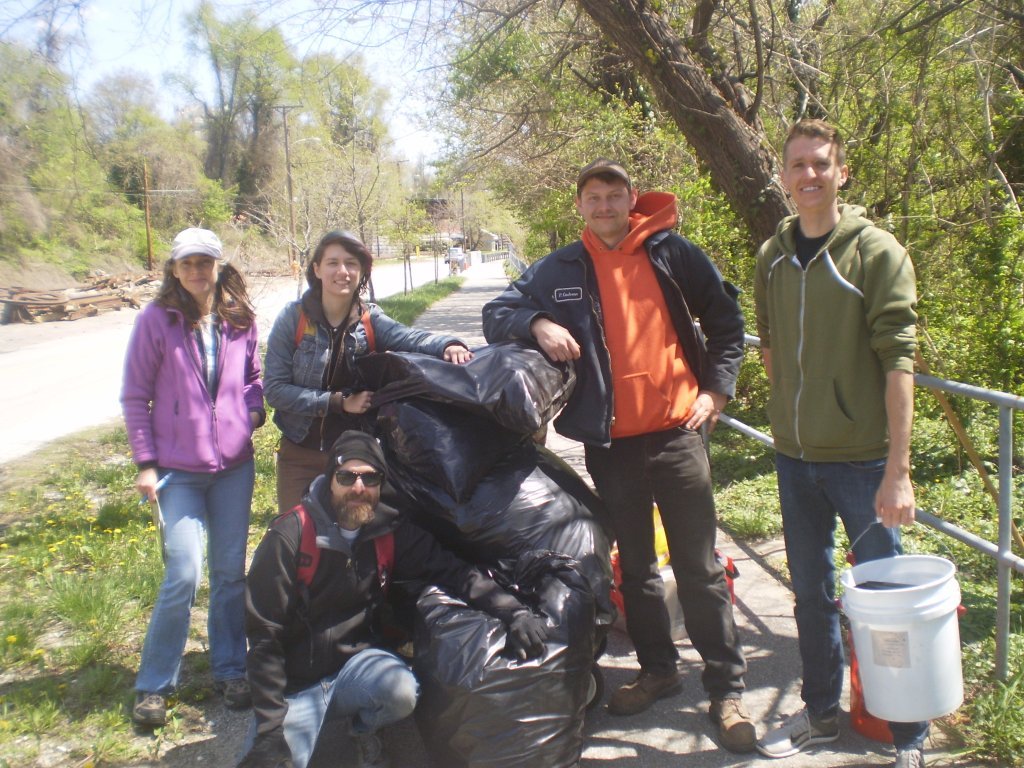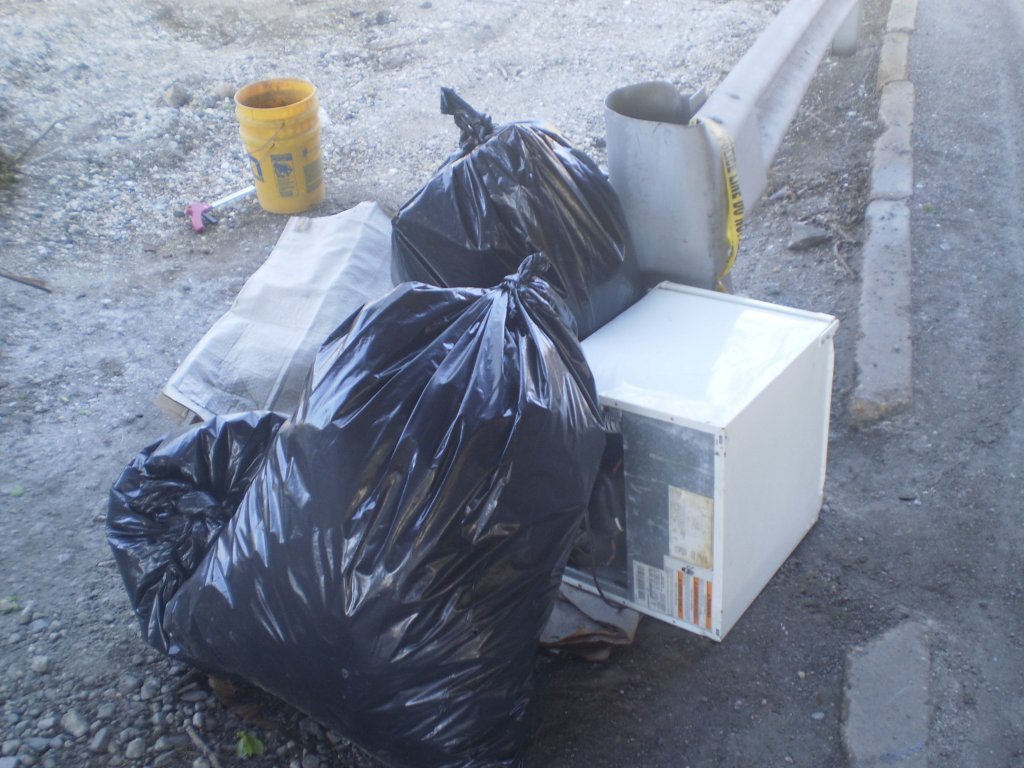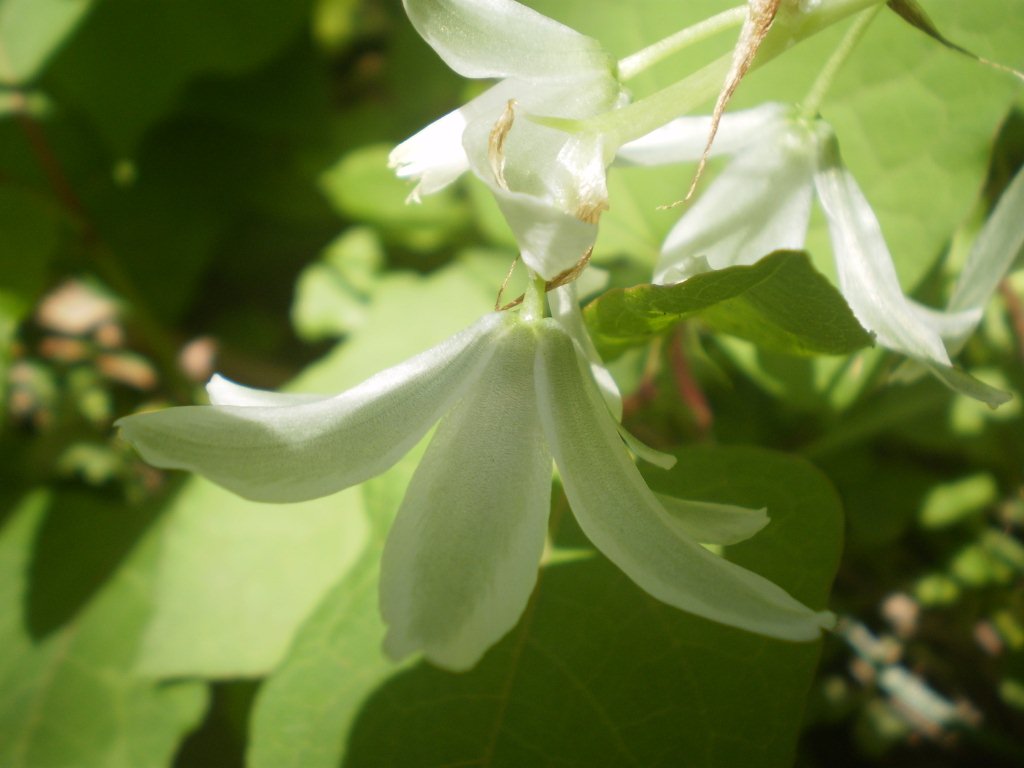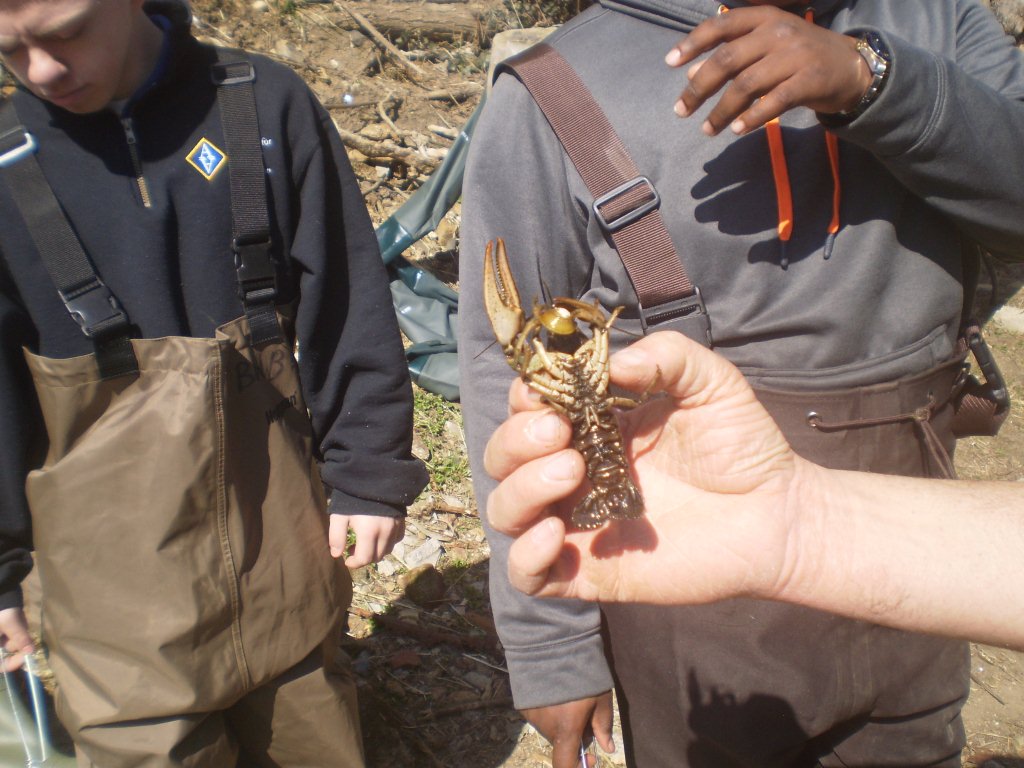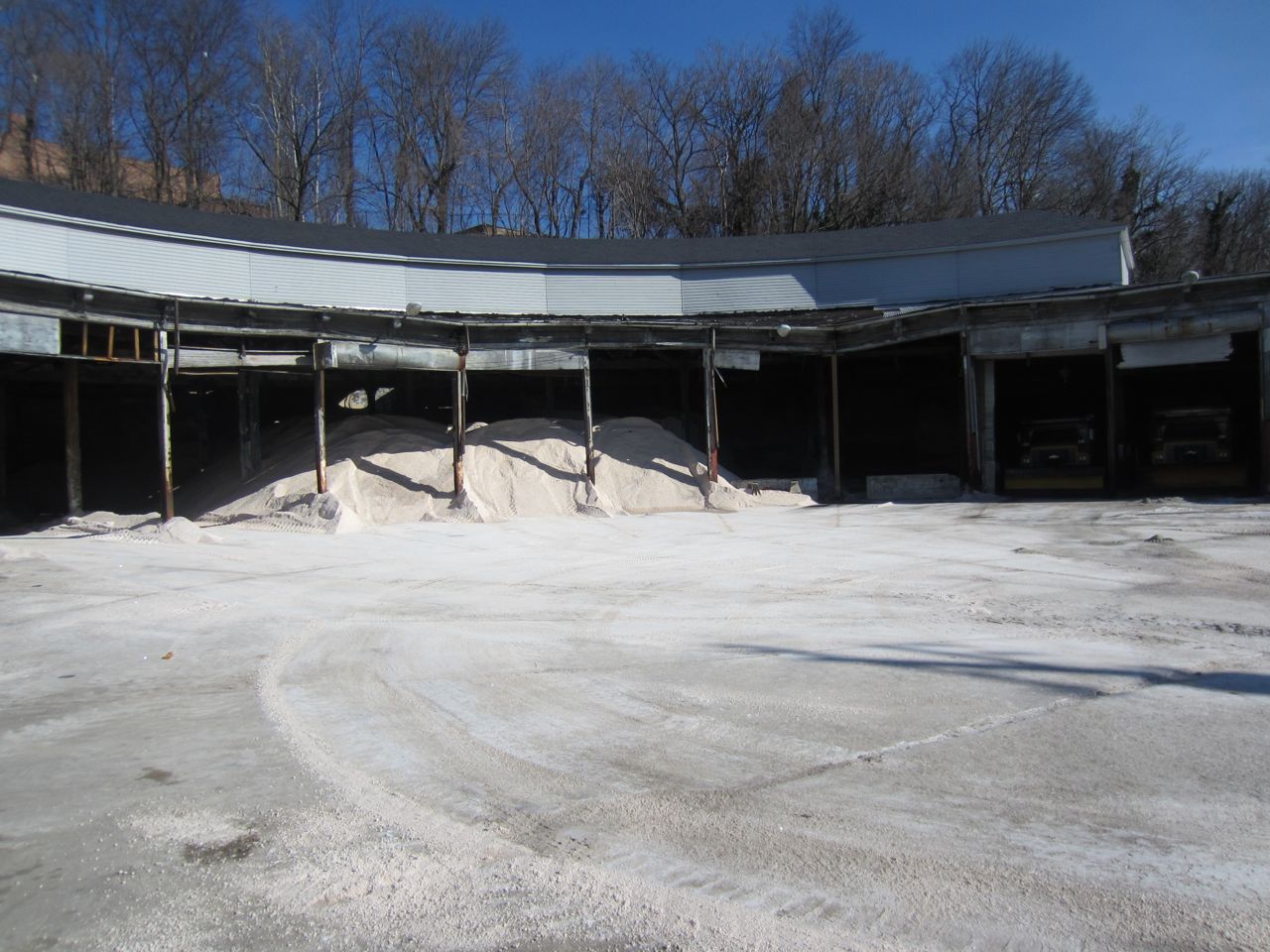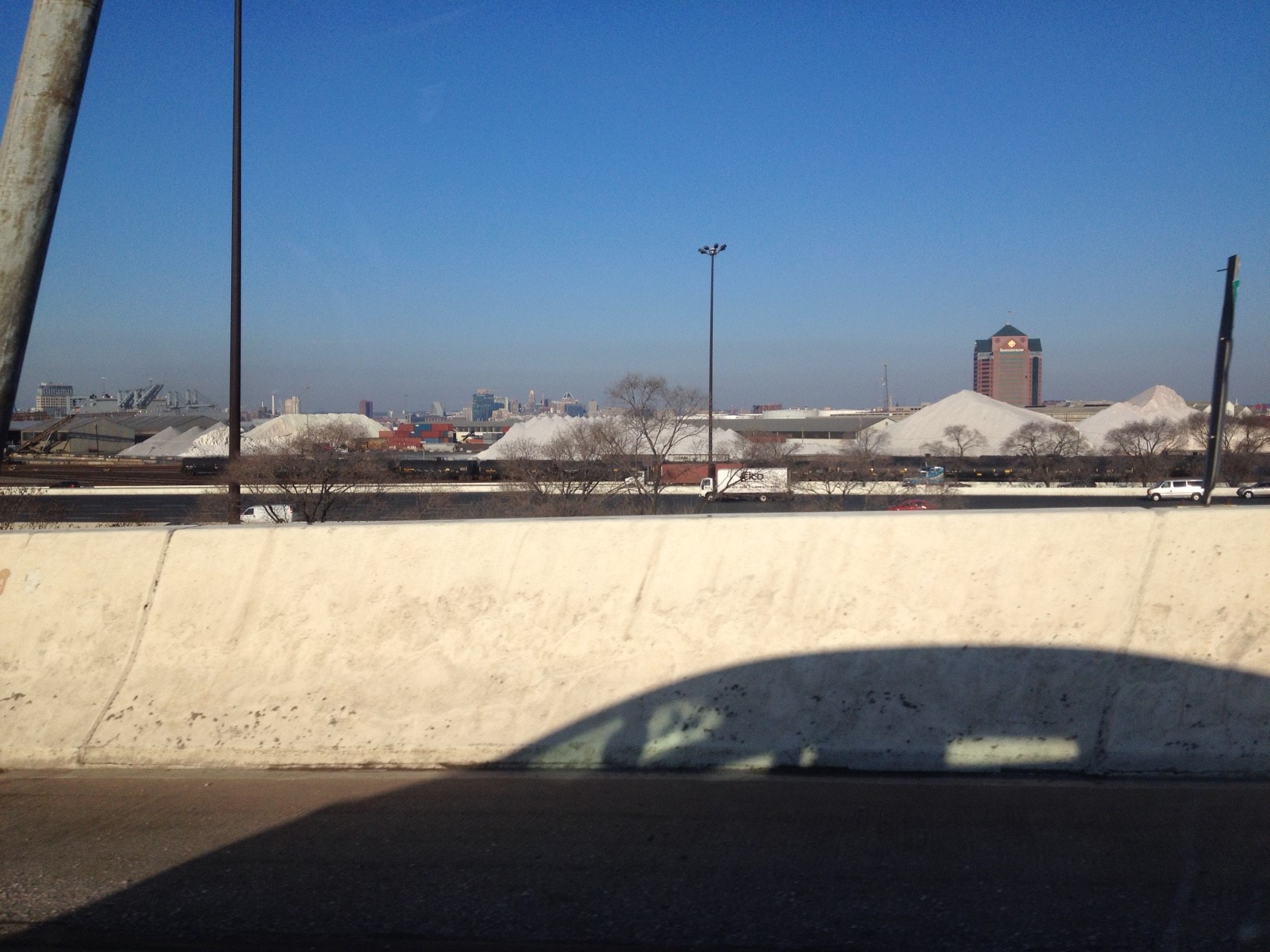Photo: American Eel in the shallows of the Jones Falls, near North Avenue (credit: Alice Volpita and Chris Bellmyer, Blue Water Baltimore)
Eels in the Jones Falls
The picture above taken by Blue Water Baltimore staff Alice Volpita and Chris Bellmyer provided the perfect opportunity to do a blog post about American Eels in the Jones Falls, which I have been threatening to do for a while. They took this picture of an American eel in the shallows of the Jones Falls right near North Avenue in the heart of downtown Baltimore, apparently just relaxing there. I’m no expert on eel behavior so I am not sure what it was doing there. We might speculate it was going after the smaller fish in the shallows as prey items, or enjoying the slightly warmer temperatures there, or for some other reason altogether. Anyway, it is really great to see this interesting animal still using the Jones Falls.
People are fascinated by eels for a lot of reasons. While they kind of look like snakes, they are a kind of fish that has very small scales, an elongate body and fins, and a snake like head. They really are slimy and can’t be held if you are not wearing gloves. It’s like trying to hold a wet icecube that moves. If you place them in a bucket they will crawl out and will proceed to slither like a snake back to the creek where you captured it. Also they get big. The largest fish in the Jones Falls I have yet seen have been eels, which can get to 3- 4’ long routinely with an amazing maximum of 5’ long. They eat just about anything but are primarily predators, and are caught by fishermen commonly. While not really sought after by recreational anglers, other countries have a big taste for eels. They are shipped off by the million as baby eels to Asia where they are raised to adulthood an eaten there. Why don’t they just breed the eels, you may ask. Well, no one has ever seen an American Eel actually breed, ever. They have caught really tiny eels out in the Sargasso Sea out near Bermuda so they know it must happen out there somewhere, but Eel spawning remains one of the greatest mysteries of fish biology, kind of like a holy grail for fish biologists.
The thing that amazes me the most about the eels in the Jones Falls is that they are there at all. They are migratory fish which live most of their lives in freshwater streams but return to the sea near Bermuda to spawn. When they get big enough, they undergo a change in shape and color, transforming from ‘yellow’ eels to ‘silver’ eels. Their eyes get bigger and they develop a pointy snout as silver eels. They then migrate downstream out of their resident streams, into rivers and estuaries, bays, and finally out to the open ocean where they make for the beautiful blue waters around Bermuda. They then apparently die because they don’t come back as far as we know. Extremely small translucent eels called leptocephali are swept by currents towards the coasts, where they enter estuaries and bays as tiny seethrough ‘glass eels’, and eventually ascend into freshwater streams where they live for years, until they are ready to go back to the sea. It takes males a lot less time than females to complete their part of the life cycle in the stream, about 2 years while taking females 5- 7 years. Females are the bigger of the two sexes when they change into silver eels and go to breed. Fish that complete this sort of life history cycle are called catadromous fishes, and they are the only fish in North America which does this.
Back to the Jones Falls, the fact that we still have migratory fish present there is amazing. Not only is the watershed very urbanized and altered, but the lower close to 2 miles is underground and buried, flowing through the massive Jones Falls conduit which extends from Penn Station all the way down to the aquarium. I find the fact that the eels will swim all the way up through this conduit incredible. I mean, it’s a long dark tube made of bricks and stone, for close to two miles. And they have already navigated through the Inner Harbor at that point! At one time there were probably other migratory species in the Jones Falls such as herring and shad, but these are long gone, being very sensitive to the modifications that have happened in the Jones Falls. The American Eel is an adaptable survivor, and once it gets up into the stream it seems to like the giant stone walls that border the stream, presumably using the big stones for shelter. The conduit does take its toll on the eel populations in the Jones Falls, and there are roughly one tenth the number of eels in the lower Jones Falls as compared to the Gwynns Falls, which has no conduit. In our surveys at Mill Number One this spring we did not find any eels to be present. Between where this picture was taken and Mill Number One is the lovely ‘Round Falls’ or ‘Horseshoe Falls’. This probably also reduces the amount of eels making it further upstream, although eels are experts at getting around barricades that would stop other fish cold. In fact eels across the country have suffered from dam construction and the closing off of habitat.
In general, eel populations have been in decline and the specific cause is not known. Excessive harvest may be one reason why this is so but there are many other possibilities. Eels have finally caught the attention of researchers and authors of popular science alike, and this can only bode well for the health of this long neglected species. Let’s hope that the eel population in the Jones Falls continues to thrive, and that individuals raised in the very heart of Baltimore continue to make their amazing transoceanic voyages.
Below: Yours truly with a sizeable American Eel captured in the Jones Falls, right across the street from the Ma and Pa freight station (photo credit: Danielle Preidt)
